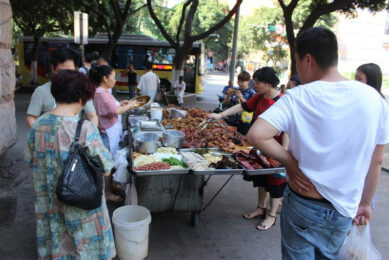Occurrence of mycotoxins in the Beijing region

Feed ingredients and complete swine feeds obtained from farms in the Beijing region in China are most often contaminated with DON followed by contamination with AFB1 and ZEA. This data will serve as a reference for the control of mycotoxins in this region.
The work has been carried out by a research team from the China Agricultural University, Beijing Municipal General Station for Animal Husbandry and Veterinary Service and the Chinese Academy of Agricultural Sciences, Beijing, China.
A total of 55 feed ingredients, including 14 corn, 13 wheat bran, 11 soybean meal and 17 dried distillers grains with solubles (DDGS) as well as 76 complete swine feeds including 7 creep feeds, 14 starter feeds, 14 grower feeds, 18 grower-finisher feeds, 10 gestating sow feeds, and 13 lactating sow feeds were randomly collected from 15 swine farms located in the Beijing region of China from July to August 2011. Immunoaffinity clean-up, using High-Performance Liquid Chromatography (HPLC) in combination with UV or Fluorescence Detection, was used for quantitative analysis of aflatoxin B1 (AFB1), deoxynivalenol (DON), zearalenone (ZEA) and ochratoxin A (OTA) in the ingredients and complete feeds.
It was shown that DON and ZEA were the most prevalent mycotoxins found. DON was detected at percentages of 93, 92, 54, 100 and 97% with a mean level of 1.01, 0.44, 0.05, 1.36 and 0.65 ppm in the samples of corn, wheat bran, soybean meal, DDGS and complete feeds, respectively. The detected percentages of ZEA were 100, 100, 54, 100 and 100 with mean levels of 109.1, 14.9, 9.2, 882.7 and 58.9 ppb in the same samples. In the wheat bran and soybean meal samples, the content of all four mycotoxins were below the maximum limits set by Chinese regulations while the percentage of samples that exceeded regulatory limits were 7, 57 and 7% for corn, and 7, 14 and 3% for the complete feeds for AFB1, DON and OTA respectively. DDGS showed the most serious mycotoxin contamination and the percentage of samples that exceeded regulatory limits were 6, 88 and 41%, for AFB1, DON and ZEA, respectively.
The research team pointed out that they are the first to present data on the natural occurrence of AFB1, DON, ZEA and OTA in ingredients and complete feeds obtained from swine farms in China’s Beijing region. The data shows that feed ingredients and complete swine feeds obtained from these farms are most often contaminated with DON followed by contamination with AFB1 and ZEA.
The full study has been published in the Journal of Animal Science and Biotechnology.











